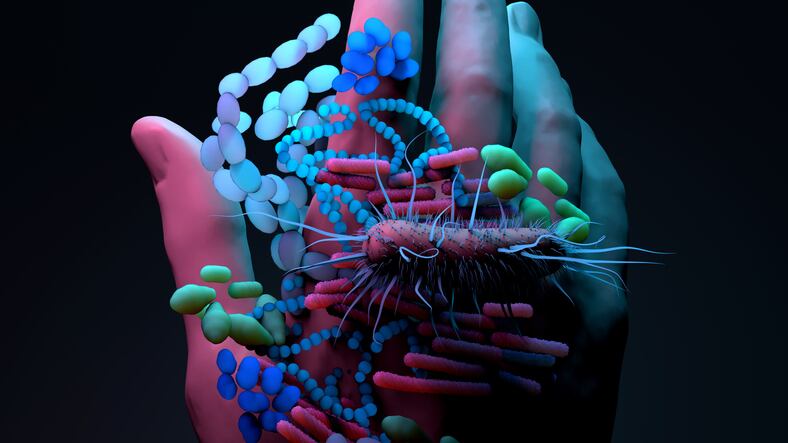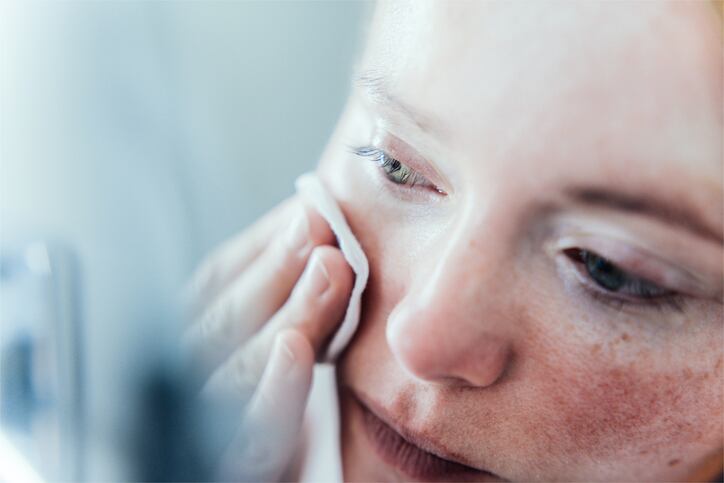A scientific review published by Dermatologica Sinica, the publication for the Taiwanese Dermatological Association and Taiwanese Society for Dermatological Investigation, Weng et al., aimed to summarize current research on how the microbiome plays into three common skin issues.
The review looked specifically at acne, skin aging and rosacea and what the skin microbiome looks like with those conditions and during treatment.
“Our goal was to undertake a comprehensive review of all relevant studies in the literature, which included studies on the relationships between the skin microbiome and acne vulgaris, rosacea and skin aging, and to provide medical providers with an overview of current perspectives on treatment,” Weng et al. said.
Acne
The studies cited in Weng et al.’s review found several microbiome characteristics of those with ance conditions, including the following:
- An overabundance of Firmicutes and Proteobacteria
- Lower levels of Actinobacteria
- Higher Staphylococcus for those with acne lesions
- For adults with acne, the dominant bacteria was C. acnes
- For children with acne, the dominant bacteria was Staphylococcus
Weng et al. said one study found the treatment of acne with tretinoin and benzoyl peroxide appeared to decrease the diversity of bacteria on the skin. However, another study found that diversity was higher for those without acne lesions and in treated areas.
Treatments like Isotretinoin, antibiotics for acne treatment, prebiotics and probiotics may be able to create a microbiome environment to treat the lesions. However, Weng et al. added that more research is needed to create treatments that target acne-causing bacteria.
“In addition, vaccines could be developed to reduce the infections caused by C. acnes and one such anti‑inflammatory treatment approach is termed ‘ecobiological’,” Weng et al. said.
Skin aging
Weng et al. found that studies on the microbiome during skin aging found the following bacterial activity:
- A decline in Cutibacterium spp
- Overrepresentation of Prevotella, Rothia and Veillonella
- An increase of archaea
Studies cited in the review found similar results in European, Chinese and Korean women. They also found that microbiome diversity is lower on skin showing aging symptoms than on skin that is not.
The studies largely attribute these microbiome changes to lower skin moisture caused by decreased activity in the sebaceous glands, which manage the secretion of sebum.
“Regulators of skin microbiome homeostasis in different age groups could be developed as targets in new treatments of age‑related skin diseases,” Weng et al. said.
Weng et al. said current research suggests changes to the skin microbiome may contribute to skin aging symptoms like wrinkles, dark spots and looseness. Further research is needed to characterize the relationship between those symptoms and the skin microbiome.
Rosacea
The role of microorganisms in rosacea is already broadly accepted, Weng et al. said, and recent studies found the following changes to the microbiome on affected skin:
- Higher levels of Firmicutes and Proteobacteria
- Lower levels of Actinobacteria
However, Weng et al. noted that bacterial diversity did not appear to be affected by antibiotic treatment.
Studies have also found that environmental factors like a high dust level, working indoors, environmental pollutants and sun exposure increase the prevalence of rosacea and microorganisms which are linked to it.
Other research is underway to understand the roll of other microorganisms on rosacea, Weng et al. said.
“The skin microbiome is important for proper immune function within the skin,” Weng et al. said. “(Activation of the immune system) can result in abnormal downstream effects, including vasodilation, angiogenesis, extracellular matrix deposition, and leukocyte chemotaxis.”
The research team also said studies are underway to understand how the gastrointestinal microbiome affects rosacea. Weng et al. said all of the microbiome factors currently under investigation may help dermatology better understand how to treat the condition.
Title: Skin microbiome in acne vulgaris, skin aging, and rosacea: An evidence-based review
Author: Weng et al.
Source: Dermatologica Sinica DOI: 10.4103/ds.ds_28_22




